- Liliaceae
- Lamiaceae
- Euphorbiaceae
- Leguminosae
- Zingiberaceae
- Chloranthaceae
- Campanulaceae
- Asteraceae
- Acanthaceae
- Orchidaceae
- Polygonaceae
- Ranunculaceae
- Vitaceae
- Rubiaceae
- Solanaceae
- Thymelaeaceae
- Saururaceae
- Moraceae
- Polypodiaceae
- Myrtaceae
- Araceae
- Adiantaceae
- Schisandraceae
- Amaranthaceae
- Berberidaceae
- Araliaceae
- Taxaceae
- Cucurbitaceae
- Apiaceae
- Guttiferae
- Scrophulariaceae
- Papilionaceae
- Caprifoliaceae
- Elaeagnaceae
- Apocynaceae
- Brassicaceae
- Papaveraceae
- Gentianaceae
- Paeoniaceae
- Lauraceae
- Punicaceae
- Nyssaceae
- Ephedraceae
- Gnetaceae
- Polygalaceae
- Violaceae
- Ginkgoaceae
- Cupressaceae
- Dipsacaceae
- Eucommiaceae
- Juglandaceae
- Dryopteridaceae
- Rosaceae
- Huperziaceae
- Caryophyllaceae
- Rhamnaceae
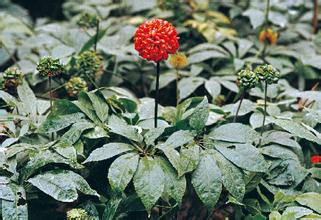
Panax notoginseng
- Introduction
- Download
Blast
Panax notoginseng is a species of the genus Panax, and it is most commonly referred to in English as notoginseng. Like P. ginseng, P. quinquefolius and P. vietnamensis, notoginseng contains dammarane-type ginsenosides as the major constituents. Dammarane type ginsenosides includes 2 classifications: the 20(S)-protopanaxadiol (ppd) and 20(S)-protopanaxatriol (ppt) classifications. P. notoginseng contains high levels of Rb1, Rd (ppd classification) and Rg1 (ppt classification)ginsenosides.
Year:2011
Institution:The Key Laboratory of Bioactive Substances and Resources Utilization of Chinese Herbal Medicine, Ministry of Education, Institute of Medicinal Plant Development, Chinese Academy of Medical Sciences & Peking Union Medical College
Material: Guangzhou, China
Year:2015
Institution:School of Biomedical Sciences, The Chinese University of Hong Kong
Material: Yunnan, China
Data link: http://herbalplant.ynau.edu.cn/index.php?m=content&c=index&a=show&catid=100&id=115
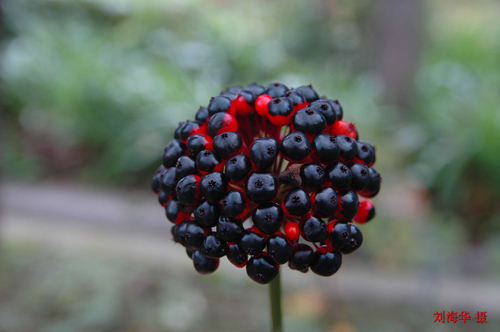
Panax japonicus
- Introduction
- Download
Blast
Panax japonicus C.A.Mey, a perennial herb in the Araliaceae family, has been used as Chinese traditional medicinal herb for thousand years. The earliest history of P. japonicus was recorded in the traditional Chinese medicine book, “Ben Cao Gang Mu Shi Yi” of Bai Cao Jing in the Qing Dynasty (published in 1765 A.D) . In Traditional Chinese Medicine (TCM), rhizomes of P. japonicus was mainly used as a tonic, anti-inflammatory and haemostatic agent in China. Most of their therapeutic effects had been reported due to the presence of triterpenoid saponins, a group of dammarane-and oleanane-type saponins. Compared to Panax ginseng and Panax notoginseng, the level of total triterpenoid saponins of P. japonicus was usually higher and in which oleanane saponins are the main active constituents
1
Year:2015
Institution:School of Biology & Pharmacy Engineering, Wuhan Polytechnic University, Wuhan
Material: Huebei, China
2
Year:2016
Institution: Graduate School of Pharmaceutical Sciences, Chiba University, Chiba, Japan
Material: Janpan
Data link: http://www.herbal-genome.cn/index.php?m=content&c=index&a=show&catid=100&id=116
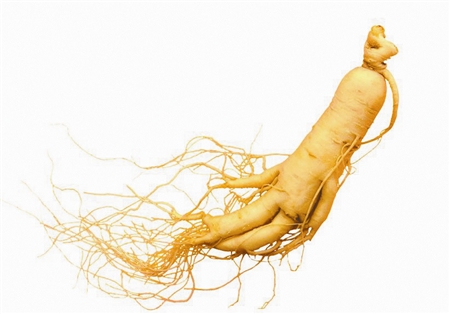
Panax ginseng
- Introduction
- Download
Blast
Panax ginseng, the Chinese ginseng. Ginsenosides, unique compounds of the Panax species, are being studied for their potential as medicine or a dietary supplement. Side effects can include nausea, diarrhea, headaches, nose bleeds, high blood pressure, low blood pressure, and breast pains.
Year:2013
Institution:Institute of Medicinal Plant Development, Chinese Academy of Medical Sciences & Peking Union Medical College
Material: Liangning, China
Data link: http://www.herbal-genome.cn/index.php?m=content&c=index&a=show&catid=100&id=117
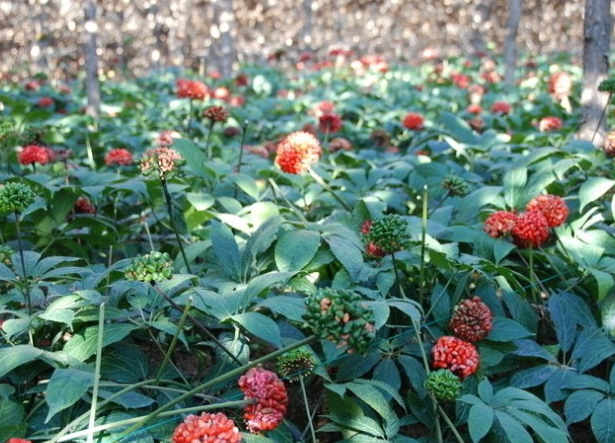
Panax Vietnamensis var.fuscidiscus
- Introduction
- Download
Blast
Panax vietnamensis or Vietnamese ginseng is a species of the ginseng genus Panax. In Vietnam the species, prized in herbal medicine, is commercially very valuable and now considered threatened.
Year:2015
Institution:Yunnan Research Center on Good Agricultural Practice for Dominant Chinese Medicinal Materials, Yunnan Agricultural University
Material: Yunnan, China
Data link: http://herbalplant.ynau.edu.cn/index.php?m=content&c=index&a=show&catid=100&id=118
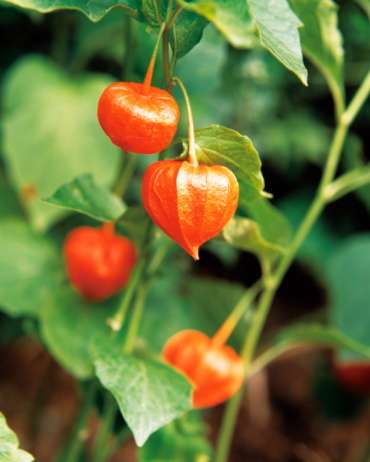
Withania somnifera (L.) Dunal
- Introduction
- Download
Blast
Withania somnifera (L.) Dunal belonging to family Solanceae is commonly known as Ashwagandha or Indian ginseng and is a valued medicinal plant with pharmaceutical and nutraceutical applications. It is widely used in traditional medical systems of India and Africa as an adaptogens or vitalizers. The berries and leaves are applied externally to tumors, tubercular glands, carbuncles, and ulcers. The roots are used to prepare the herbal remedy ashwagandha, which has been traditionally used for various symptoms and conditions.
Year:2013
Institution:Division of Plant Biotechnology, Institute of Forest Genetics and Tree Breeding, R.S. Puram, Coimbatore, Tamil Nadu, India
Material: -
Year:2015
Institution:National Botanical Research Institute, Council of Scientific and Industrial Research (CSIR-NBRI), Rana Pratap Marg, Lucknow, India
Material: India
Data link: http://herbalplant.ynau.edu.cn/index.php?m=content&c=index&a=show&catid=100&id=119

Hippophae rhamnoides L.
- Introduction
- Download
Blast
Hippophae rhamnoides L. fruits, called also seaberry, sanddorn, or Siberian pineapple. In Europe H. rhamnoides bushes occur along the North Sea, Baltic Sea, and the Atlantic coast of Norway. The wild form grows also in Central Asia from China through Mongolia and Siberia, eastern Afghanistan (mountain areas), and eastern Uzbekistan. The plants have been used in the traditional Austrian medicine internally as tea, juice, or syrup for treatment of infections, colds, and flu.
Year:2012
Institution:Department of Biology, University of Western Ontario, London, Ontario, Canada
Material: Saskatchewan, Canada
Year:2013
Institution:University School of Biotechnology, Guru Gobind Singh Indraprastha University, Dwarka, New Delhi, India
Material: Saskatchewan, Canada
Year:2014
Institution:University School of Biotechnology, Guru Gobind Singh Indraprastha University, Sector-16C, Dwarka, Delhi 110078, India
Material: Saskatchewan, Canada
Data link: http://www.herbal-genome.cn/index.php?m=content&c=index&a=show&catid=100&id=114

Catharanthus roseus
- Introduction
- Download
Blast
Catharanthus roseus, commonly known as the Madagascar periwinkle or rosy periwinkle, is a species of Catharanthus native and endemic to Madagascar. The medicinal plant Catharanthus roseus is of enormous pharmaceutical interest because it contains about 130 terpenoid indole alkaloids, some of which exhibit strong pharmacological activities.
Year:2013
Institution:Department of Plant Systems Biology, VIB, B-9052 Gent, Belgium
Department of Plant Biotechnology and Bioinformatics, Ghent University, B-9052 Gent, Belgium
Data link: http://www.herbal-genome.cn/index.php?m=content&c=index&a=show&catid=100&id=112

Gentiana rigescens
- Introduction
- Download
Blast
Gentiana rigescens, also named Caine gentian, belongs to Gentiana, a member of the Gentianaceae family. It is a geoherb of great importance to China’s Yunnan province. G. rigescens is a perennial, growing amongst hillside grasses, bushes, and trees, at relatively high altitudes. Recent research has shown that it possesses potential functions in liver protection and immune promotion. The main effective component of G. rigescens is gentiopicroside, which is mainly found in the vacuoles of root cells, although it is synthesized in shoots. The content of gentiopicroside in roots was far higher than that in shoots at the flower stage. In addition, there are other active components including swertiamarin, sweroside, erythricine, ursolic acid, oleanolic acid, loganic acid, gentianidine, and gentiana aldin.
Year:2015
Institution:College of Resources and Environment, Yuxi Normal University, Yuxi 653100, China
Material: Yunnan, China
Data link: http://www.herbal-genome.cn/index.php?m=content&c=index&a=show&catid=100&id=113
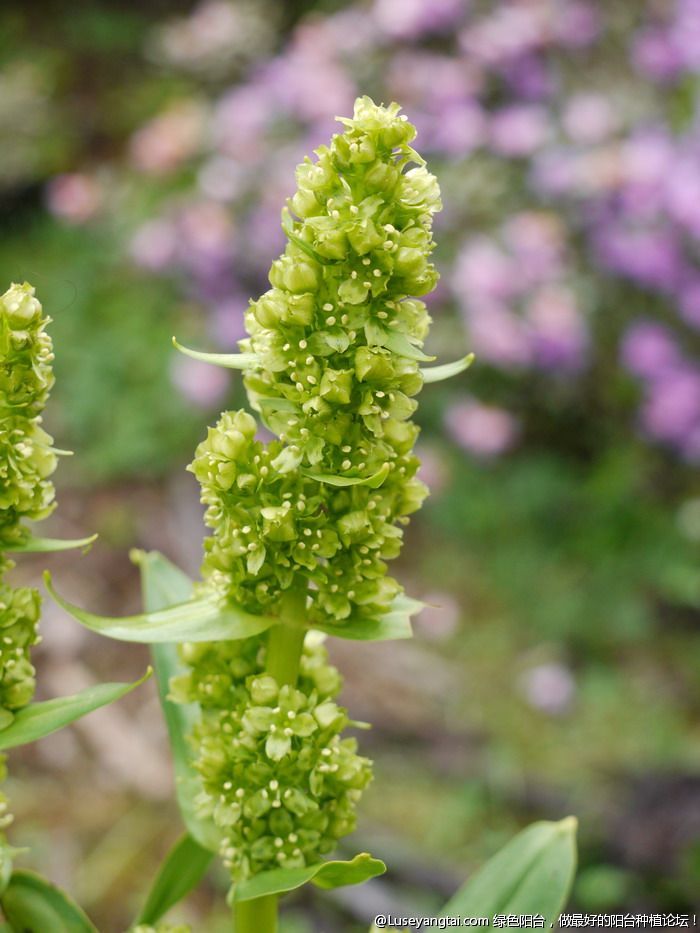
Veratrilla baillonii
- Introduction
- Download
Blast
Veratrilla baillonii Franch (Gentianaceae) is an important Chinese medicinal herb that is distributed only in the eastern Himalayas and Hengduan Mountains of southwest China. V. baillonii has been widely used to cure liver-related diseases with a common name of “Jin Bu Huan”.
Year:2015
Institution:School of Life Sciences, Engineering Research Center of Sustainable Development and Utilization of Biomass Energy Ministry of Education,Key Laboratory of Ecological Adaptive Evolution and Conservation on Animals-Plants in Southwest Mountain Ecosystem of University in Yunnan Province, Yunnan Normal University, Kunming
Material: Yunnan,China
Data link: http://www.herbal-genome.cn/index.php?m=content&c=index&a=show&catid=100&id=111
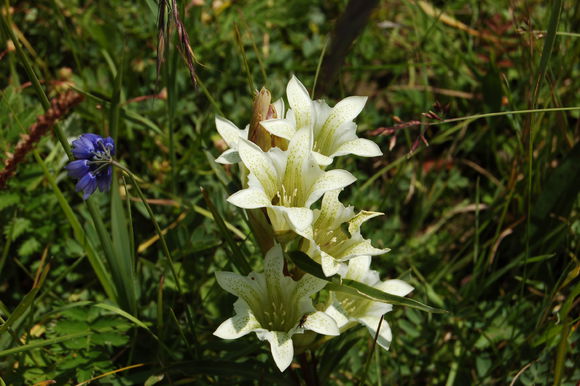
Gentiana straminea
- Introduction
- Download
Blast
Gentiana straminea Maxium is a perennial herbaceous flowering plant belonging to the Gentianacea genus. It originated in Central Asia and Europe and is distributed between the elevations of 2600 m and 5000 m on the Qinghai-Tibet Plateau. In this region, it commonly called “Mahua Jiao,” is well-known as a traditional Tibetan herb, as it has been for more than 2000 years. Its bulky root is used in the treatment or cure of many diseases and conditions, including fungal and bacterial infections, hepatitis, constipation, rheumatism, pain, and hypertension.
Year:2015
Institution:Key Laboratory of Adaptation and Evolution of Plateau Biota (AEPB), Northwest Institute of Plateau Biology, Chinese Academy of Sciences, Xining 810008, Qingha
Material: Qinghai, China
Data link: http://www.herbal-genome.cn/index.php?m=content&c=index&a=show&catid=100&id=110